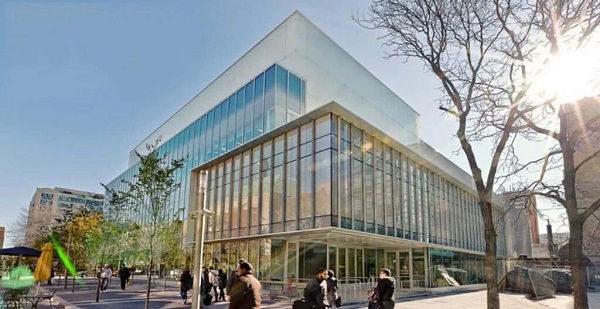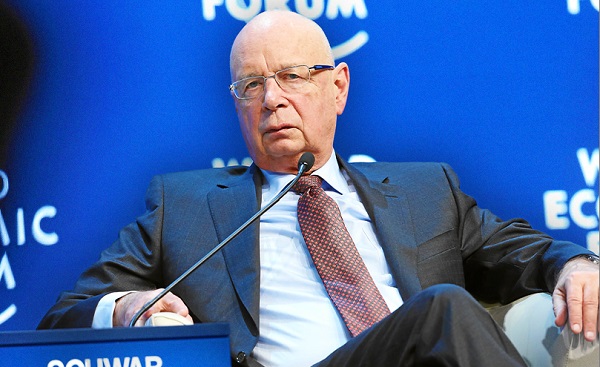DEI
TMU Medical School Sacrifices Academic Merit to Pursue Intolerance

From the Frontier Centre for Public Policy
Race- (and other-) based admissions will inevitably pave the way to race- (and other-) based medical practices, which will only further the divisions that exist in society. You can’t fight discrimination with more discrimination.
Perhaps it should be expected that a so-obviously ‘woke’ institution as the Toronto Metropolitan University (TMU) would toss aside such antiquated concepts as academic merit as it prepares to open its new medical school in the fall of 2025.
After all, until recently, TMU was more widely known as Ryerson University. But it underwent a rapid period of self-flagellation, statue-tipping and, ultimately, a name change when its namesake, Edgerton Ryerson, was linked (however indirectly) to Canada’s residential school system.
Now that it has sufficiently cleansed itself of any association with past intolerance, it is going forward with a more modern form of intolerance and institutional bias by mandating a huge 80% diversity quota for its inaugural cohort of medical students.
TMU plans to fill 75 of its 94 available seats via three pathways for “equity-deserving groups” in an effort to counter systemic bias and eliminate barriers to success for certain groups. Consequently, there are distinct admission pathways for “Indigenous, Black and Equity-Deserving” groups.
What exactly is an equity-deserving group? It’s almost any identity group you can imagine – that is, except those who identify as white, straight, cisgender, straight-A, middle- and/or upper-class males.
To further facilitate this grand plan, TMU has eliminated the need to write the traditional MCAT exam (often used to assess aptitude, but apparently TMU views it as a barrier to accessing medical education). Further, it has set the minimum grade point average at a rather average 3.3 and, “in order to attract a diverse range of applicants,” it is accepting students with a four-year undergrad degree from any field.
It’s difficult to imagine how such a heterogenous group can begin learning medicine at the same level. Someone with an advanced degree in physiology or anatomy will be light years ahead of a classmate who gained a degree by dissecting Dostoyevsky.
Finally, it should be noted that in “exceptional circumstances” any of these requirements can be reconsidered for, you guessed it, black, indigenous or other equity-deserving groups.
As for the curriculum itself, it promises to be “rooted in community-driven care and cultural respect and safety, with ECA, decolonization and reconciliation woven throughout” which will “help students become a new kind of physician.”
Whether or not this “new kind of physician” will be perceived as fully credible, however, is yet to be seen. Because of its ‘woke’ application process, all TMU medical graduates will be judged differently no matter how skilled they may be and even when physicians are in short supply. Life and death decisions are literally in their hands, and in such cases, one would think that medical expertise is far more important than sharing the same pronouns.
Frankly, if students need a falsely inclusive environment where all minds think alike to feel safe and a part of society, then maybe they aren’t cut out to become doctors who will treat all people equally. After all, race- (and other-) based admissions will inevitably pave the way to race- (and other-) based medical practices, which will only further the divisions that exist in society. You can’t fight discrimination with more discrimination.
It’s ridiculous to use medical school enrollments as a means of resolving issues of social injustice. However, from a broader perspective, this social experiment echoes what is already happening in universities across Canada. The academic merit of individuals is increasingly being pushed aside to fulfill quotas based on gender or even race.
One year ago, the University of Victoria made headlines when it posted a position for an assistant professor in the music department. The catch is that the selection process was limited to black people. Education professor Dr. Patrick Keeney points out that diversity, equity and inclusion policies are reshaping core operations at universities. Grants and prestigious research chair positions are increasingly available only to visible minorities or other identity groups.
Non-academic considerations are given priority, and funding is contingent on meeting minority quotas.
Consequently, Keeney states that the quality of education is falling and universities that were once committed to academic excellence are now perceived as institutions to pursue social justice.
Diversity is a legitimate goal, but it cannot – and should not — be achieved by subjugating academic merit to social experimentation.
Susan Martinuk is a Senior Fellow with the Frontier Centre for Public Policy and author of Patients at Risk: Exposing Canada’s Health-care Crisis.
2025 Federal Election
Carney Liberals pledge to follow ‘gender-based goals analysis’ in all government policy

From LifeSiteNews
‘We will continue to update the GBA+ tool to ensure it reflects the identities and values of all Canadians, including diversity as a core value.’
Prime Minister Mark Carney’s Liberal Party is promising to effectively mandate that all government policies and initiatives be measured using “Gender Based Analyses” before being approved and implemented.
The Liberal’s “Canada Strong” election platform, under the Gender Based Analyses (GBA) tab, pledges to “ensure that every measure in this platform will be implemented with a full GBA+ analysis – so that we can continue to build Canada strong, for all Canadians.”
“A Mark Carney-led government will support and champion all Canadians, including by reviewing policies and programs using an intersectional lens. We will continue to update the GBA+ tool to ensure it reflects the identities and values of all Canadians, including diversity as a core value.”
The GBA tab also mentions “2SLGBTQI+ people” four times, three of which are related to funding promises.
It notes that a Carney-led government would protect “the values” the Charter of Rights and Freedoms was “founded on – which are under threat – and ensuring the protection of women, people with disabilities, racialized and Indigenous communities, and 2SLGBTQI+ people.”
Carney already stated his government would provide sterilizing puberty blockers to children “without exception,” calling harmful “transitioning” surgeries and chemical “treatments” a “fundamental right.”
While campaigning to become Liberal Party leader, Carney had also promised that his government would pursue an agenda of “inclusiveness” to counter U.S. President Donald Trump’s more socially conservative agenda.
His promise to promote “inclusiveness” in Canada in opposition to Trump’s agenda came only days after former Prime Minister Justin Trudeau’s Liberal government promised an extra $41.5 million in taxpayer funds to advance 106 pro-LGBT projects “across Canada.”
Carney, whose ties to globalist groups have had Conservative Party leader Pierre Poilievre call him the World Economic Forum’s “golden boy”.
Canadians will head to the polls on April 28.
Business
‘Great Reset’ champion Klaus Schwab resigns from WEF

From LifeSiteNews
Schwab’s World Economic Forum became a globalist hub for population control, radical climate agenda, and transhuman ideology under his decades-long leadership.
Klaus Schwab, founder of the World Economic Forum and the face of the NGO’s elitist annual get-together in Davos, Switzerland, has resigned as chair of WEF.
Over the decades, but especially over the past several years, the WEF’s Davos annual symposium has become a lightning rod for conservative criticism due to the agendas being pushed there by the elites. As the Associated Press noted:
Widely regarded as a cheerleader for globalization, the WEF’s Davos gathering has in recent years drawn criticism from opponents on both left and right as an elitist talking shop detached from lives of ordinary people.
While WEF itself had no formal power, the annual Davos meeting brought together many of the world’s wealthiest and most influential figures, contributing to Schwab’s personal worth and influence.
Schwab’s resignation on April 20 was announced by the Geneva-based WEF on April 21, but did not indicate why the 88-year-old was resigning. “Following my recent announcement, and as I enter my 88th year, I have decided to step down from the position of Chair and as a member of the Board of Trustees, with immediate effect,” Schwab said in a brief statement. He gave no indication of what he plans to do next.
Schwab founded the World Economic Forum – originally the European Management Forum – in 1971, and its initial mission was to assist European business leaders in competing with American business and to learn from U.S. models and innovation. However, the mission soon expanded to the development of a global economic agenda.
Schwab detailed his own agenda in several books, including The Fourth Industrial Revolution (2016), in which he described the rise of a new industrial era in which technologies such artificial intelligence, gene editing, and advanced robotics would blur the lines between the digital, physical, and biological worlds. Schwab wrote:
We stand on the brink of a technological revolution that will fundamentally alter the way we live, work, and relate to one another. In its scale, scope, and complexity, the transformation will be unlike anything humankind has experienced before. We do not yet know just how it will unfold, but one thing is clear: the response to it must be integrated and comprehensive, involving all stakeholders of the global polity, from the public and private sectors to academia and civil society …
The Fourth Industrial Revolution, finally, will change not only what we do but also who we are. It will affect our identity and all the issues associated with it: our sense of privacy, our notions of ownership, our consumption patterns, the time we devote to work and leisure, and how we develop our careers, cultivate our skills, meet people, and nurture relationships. It is already changing our health and leading to a “quantified” self, and sooner than we think it may lead to human augmentation.
How? Microchips implanted into humans, for one. Schwab was a tech optimist who appeared to heartily welcome transhumanism; in a 2016 interview with France 24 discussing his book, he stated:
And then you have the microchip, which will be implanted, probably within the next ten years, first to open your car, your home, or to do your passport, your payments, and then it will be in your body to monitor your health.
In 2020, mere months into the pandemic, Schwab published COVID-19: The Great Reset, in which he detailed his view of the opportunity presented by the growing global crisis. According to Schwab, the crisis was an opportunity for a global reset that included “stakeholder capitalism,” in which corporations could integrate social and environmental goals into their operations, especially working toward “net-zero emissions” and a massive transition to green energy, and “harnessing” the Fourth Industrial Revolution, including artificial intelligence and automation.
Much of Schwab’s personal wealth came from running the World Economic Forum; as chairman, he earned an annual salary of 1 million Swiss francs (approximately $1 million USD), and the WEF was supported financially through membership fees from over 1,000 companies worldwide as well as significant contributions from organizations such as the Bill & Melinda Gates Foundation. Vice Chairman Peter Brabeck-Letmathe is now serving as interim chairman until his replacement has been selected.
-

 Alberta1 day ago
Alberta1 day agoGovernments in Alberta should spur homebuilding amid population explosion
-

 armed forces2 days ago
armed forces2 days agoYet another struggling soldier says Veteran Affairs Canada offered him euthanasia
-

 International1 day ago
International1 day agoHistory in the making? Trump, Zelensky hold meeting about Ukraine war in Vatican ahead of Francis’ funeral
-

 Alberta1 day ago
Alberta1 day agoLow oil prices could have big consequences for Alberta’s finances
-

 Business1 day ago
Business1 day agoIt Took Trump To Get Canada Serious About Free Trade With Itself
-

 conflict2 days ago
conflict2 days agoWhy are the globalists so opposed to Trump’s efforts to make peace in Ukraine?
-

 2025 Federal Election1 day ago
2025 Federal Election1 day agoCarney’s budget is worse than Trudeau’s
-

 C2C Journal24 hours ago
C2C Journal24 hours ago“Freedom of Expression Should Win Every Time”: In Conversation with Freedom Convoy Trial Lawyer Lawrence Greenspon







